paleomaxx
Hero Member
- Joined
- Aug 14, 2016
- Messages
- 841
- Reaction score
- 6,888
- Golden Thread
- 6
- Location
- Upstate, NY
- 🥇 Banner finds
- 6
- Detector(s) used
- Deus XP
- Primary Interest:
- All Treasure Hunting
I'm going to be counting the days until the snow starts to melt and I can get back to this spot. It's a cellar hole beside an old road on private property that I got permission to check out. I've been hunting the sites in those woods for a few months, but this one I only recently stumbled on because it isn't in any of the 1800's property maps. While hard to find, unmarked sites tend to be the most exciting spots to detect. This one is a well-preserved cellar that's on a small rise just above a stream. At first the hunt went very slow with almost no targets and I started to think someone had cleaned it out already, but after an hour I started pulling out button after button and mostly shallow targets. By the end of the hunt I had pulled out over a dozen buttons including two that I never expected:

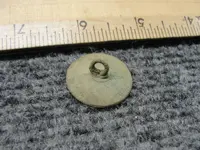
I believe these two are blowhole buttons, but one is absolutely huge; nearly an inch across!
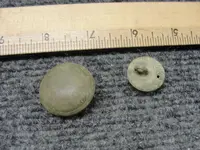
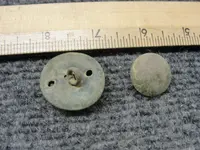
From my understanding these were worn from the 1600's to the 1750's. Since my area wasn't settled until after that it's likely that these were just worn many years after they were out of fashion. Based on the other buttons and relics I would guess that this site was occupied from the 1770's to early 1830's. I also managed to find a single late 1700's cufflink with a very unique design that I haven't seen before:
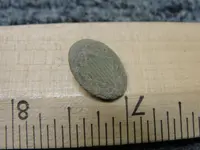
There were two Georgian shoe buckle fragments as well:
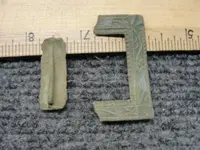
I'm hoping there's a whole shoe buckle around, but I did find a complete knee buckle that's entirely made of iron:

The knee buckle is a very good example of why you should clean all iron even if it doesn't look like anything out of the ground. Initially it looked like just another blob of rust and I put it in with the other junk iron, but a light rinse revealed it wasn't solid and some careful cleaning got rid of all the excess rust so that the mechanism became visible. I doubt it would survive tumbling so I just did a wax treatment, as is, and hopefully it'll remain stable.
There were a number of other early non-ferrous relics:
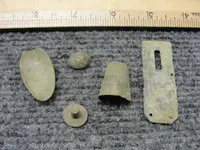
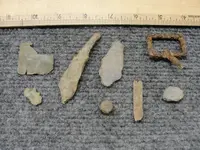
One full thimble and one fragment, the bowl of a tiny brass spoon, several pewter spoon fragments, and assorted odds and ends. No coins yet but the ground had started to freeze and several inches of snow prevented a thorough grid. I think that if I can get back when the ground is thawed and wet I should have better luck on small and deep targets. There's also more ground to cover further away from the cellar so I have high hopes for the site. With any luck some early silver is around, but I'd settle for a KGIII copper! Two feet of snow and then two weeks of cold means I'll be waiting awhile for the return trip though...


I believe these two are blowhole buttons, but one is absolutely huge; nearly an inch across!


From my understanding these were worn from the 1600's to the 1750's. Since my area wasn't settled until after that it's likely that these were just worn many years after they were out of fashion. Based on the other buttons and relics I would guess that this site was occupied from the 1770's to early 1830's. I also managed to find a single late 1700's cufflink with a very unique design that I haven't seen before:

There were two Georgian shoe buckle fragments as well:

I'm hoping there's a whole shoe buckle around, but I did find a complete knee buckle that's entirely made of iron:

The knee buckle is a very good example of why you should clean all iron even if it doesn't look like anything out of the ground. Initially it looked like just another blob of rust and I put it in with the other junk iron, but a light rinse revealed it wasn't solid and some careful cleaning got rid of all the excess rust so that the mechanism became visible. I doubt it would survive tumbling so I just did a wax treatment, as is, and hopefully it'll remain stable.
There were a number of other early non-ferrous relics:


One full thimble and one fragment, the bowl of a tiny brass spoon, several pewter spoon fragments, and assorted odds and ends. No coins yet but the ground had started to freeze and several inches of snow prevented a thorough grid. I think that if I can get back when the ground is thawed and wet I should have better luck on small and deep targets. There's also more ground to cover further away from the cellar so I have high hopes for the site. With any luck some early silver is around, but I'd settle for a KGIII copper! Two feet of snow and then two weeks of cold means I'll be waiting awhile for the return trip though...
Upvote
18




